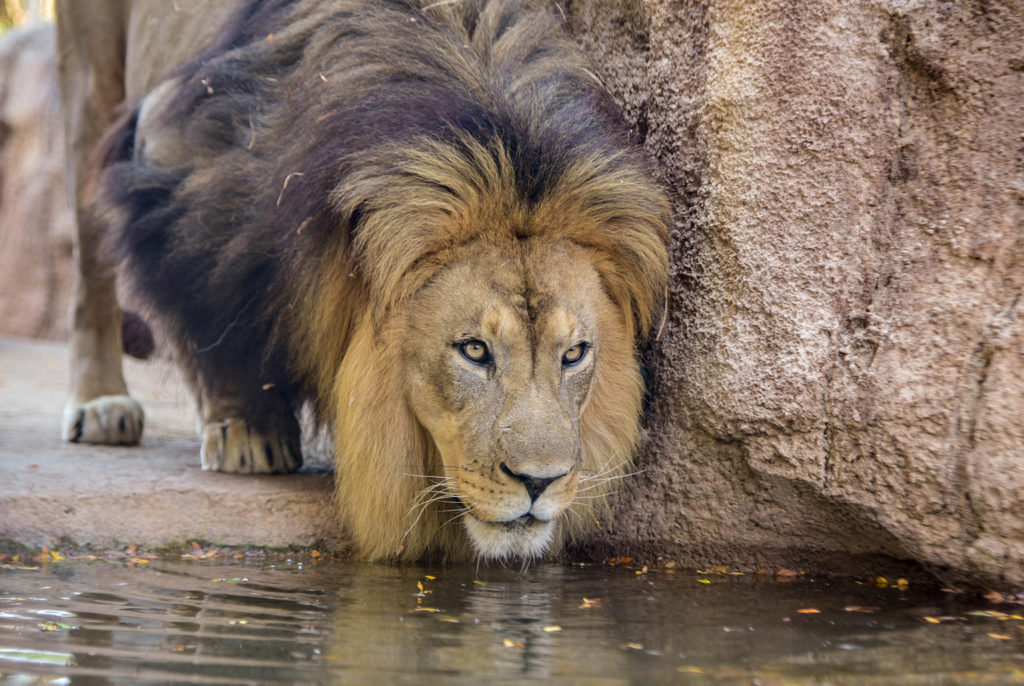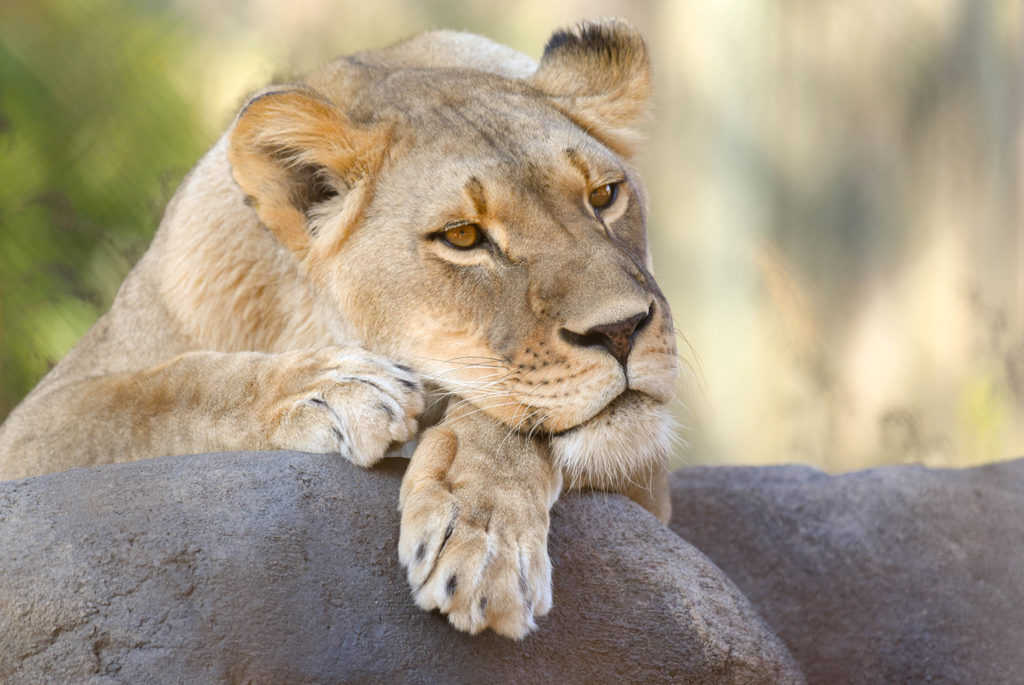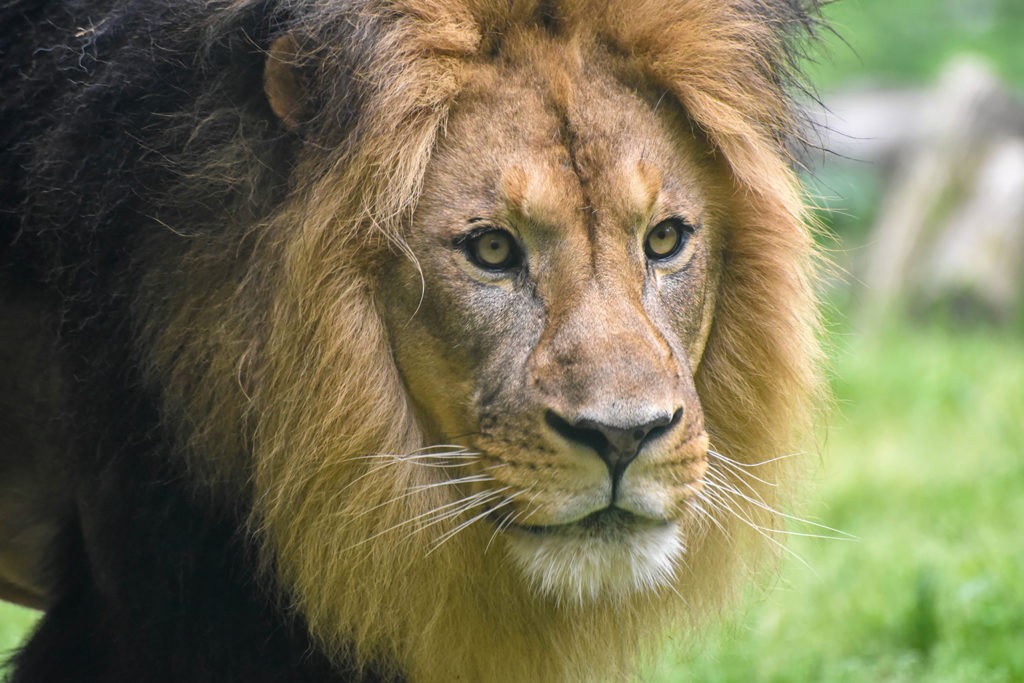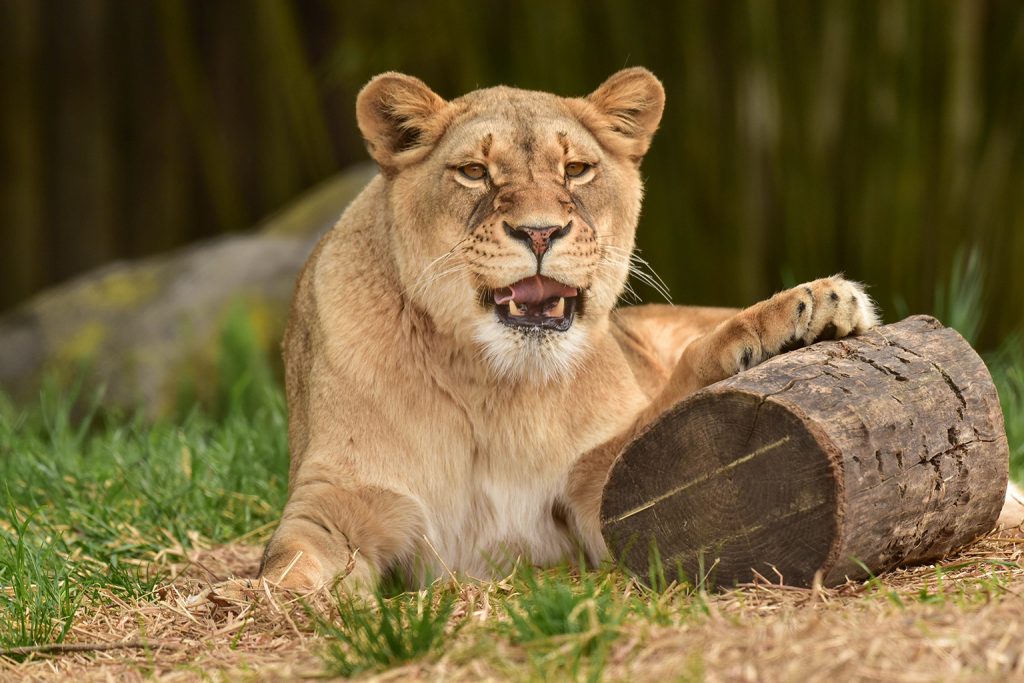Overview
“Where I live”
Lions mostly prowl Africa’s plains and savannas, although they can adapt to many habitat types, including thorn scrub and even desert fringes.
Lions are not exclusive to Africa. There are both African and Asian lions. A small population of lions lives in the forested regions of northwest India – a remnant of the lion’s former domain that once stretched from Africa to Greece and the Mediterranean. See our African lions in the African Journey area of the Zoo.
“How I live there”
Lions prefer to hunt in tall grasses that provide cover so that they can stalk their prey, get very close, and then attack. Several lionesses will try to converge on a single prey and bring it down together. They will attack large prey such as zebra and wildebeest as well as smaller prey such as impala, gazelle, and warthogs.
Lions mostly sleep through the heat of the day and hunt at night under cover of darkness. Lions are opportunistic feeders that will eat smaller game and scavenge carrion from other predators as well, particularly when large prey is scarce.
“Making my mark”
Because lions are such dominant predators, other animals sit up and take notice when they are around. From their perch atop the food chain, lions have tremendous impact on species lower down the food chain, and thus on the entire ecosystem in which they live. Lions do not go unnoticed, nor do they try (unless stalking prey). Ever heard a male lion roar? He can’t be mistaken for the timid sort. He roars in order to alert neighboring prides to his presence, to define his pride’s territory, and to warn off intruders. Lions also leave scent markings to advertise their territory to other lions. Because they have few predators to fear, a pride of lions will also sleep contentedly in broad daylight, in the open.
“What eats me”
Lions have few predators to fear other than humans. A very young or sickly lion might fall prey to hyenas. Cubs may be attacked and eaten by adult male lions. Lions are most threatened by humans who hunt them and encroach on their habitat.
Lions do not selectively hunt humans and do not often attack humans. There have been historical instances of individual lions developing a taste for human flesh and becoming man-eaters, but these cases are rare. Nonetheless, people tend to fear lions and this fear, which far outstrips any real threat, puts lions at risk. Many lions have met their death – either shot or poisoned – by local ranchers who fear for their lives and their livestock.
Raising Young
Lionesses in the same pride typically give birth at about the same time and help each other raise their cubs. The dominant male in a pride will mate with several females over the course of a few days. This insures that all will give birth at about the same time. Each lioness usually gives birth to two or three cubs per litter. Lionesses share cub-rearing duties, nursing each other’s cubs and taking turns watching the cubs while other females go off to hunt. Cubs stay near their mothers for about two years, learning how to hunt and how to behave as members of the pride. Female cubs will remain with the pride even as adults while male cubs will be ousted from the pride by the alpha male at about age three. Young males will wander alone or in bachelor groups until they can gain dominance over prides of their own.
Conservation
The vast majority of lions today live in eastern and southern Africa, and in both regions lion populations are in rapid decline. Over the past two decades, lions have declined 30 to 50% throughout their African range. The precise reasons for this decline are not entirely understood, but habitat loss and conflict with humans pose the greatest threats to lions. Outside of national parks and game reserves where lions can be protected, the big cats are hunted as trophies and exterminated because of the perceived threat that they pose to humans and livestock. Lions are listed by the IUCN, the world’s leading conservation organization, as vulnerable.
Taxonomy
- Kingdom: Animalia
- Phylum: Chordata
- Subphylum: Vertebrata
- Class: Mammalia
- Order: Carnivora
- Family: Felidae
- Genera: Panthera
- Species: leo






